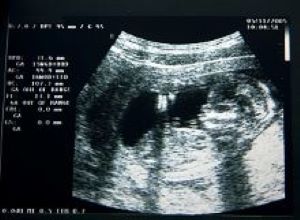A scheme that gave GP surgeries cash incentives to tell women about long-acting reversible methods of contraception has been linked to a sharp fall in UK abortion rates, reports The Guardian. Long-acting reversible contraceptives (Larcs), include the implant, intrauterine device and contraceptive injection and are highly effective.
Researchers have found that when GPs in Britain were given financial incentives to tell women about such contraceptive methods in 2009, uptake increased and abortion rates fell markedly, particularly among younger women and those from more disadvantaged backgrounds.
The study prompted calls for the incentives scheme, which was scrapped this year, to be reinstated.
According to The Guardian, the researchers reported how they analysed health records of more than 3m women in England, Wales and Scotland covering the period 2004/05 to 2013/14. The team looked at the trend for prescriptions of different contraceptives, as well as abortions, before the incentive scheme was introduced – and from this predicted the number of prescriptions that would be expected for different contraceptives in 2013/14, as well as the number of abortions.
When they looked at the figures for 2013/14 itself, they found the number of Larc prescriptions was 13% higher than expected from trends before the incentive scheme was introduced. By contrast, total prescriptions for other hormonal contraceptives were 17% lower than expected.
Dr Richard Ma of Imperial College London, a co-author of the study, said the findings implied the uptick in Larc use is unlikely to be largely down to a general increase in awareness of contraception, but potentially a result of women switching to a better method for them.
While abortion rates were already falling before the scheme was introduced, the number of abortions was 38% lower in 2013/14 than would have been predicted.
Abstract
Background: Long-acting reversible contraception (LARC) is among the most effective contraceptive methods, but uptake remains low even in high-income settings. In 2009/2010, a target-based pay-for-performance (P4P) scheme in Britain was introduced for primary care physicians (PCPs) to offer advice about LARC methods to a specified proportion of women attending for contraceptive care to improve contraceptive choice. We examined the impact and equity of this scheme on LARC uptake and abortions.
Methods and findings: We examined records of 3,281,667 women aged 13 to 54 years registered with a primary care clinic in Britain (England, Wales, and Scotland) using Clinical Practice Research Datalink (CPRD) from 2004/2005 to 2013/2014. We used interrupted time series (ITS) analysis to examine trends in annual LARC and non-LARC hormonal contraception (NLHC) uptake and abortion rates, stratified by age and deprivation groups, before and after the P4P was introduced in 2009/2010. Between 2004/2005 and 2013/2014, crude LARC uptake rates increased by 32.0% from 29.6 per 1,000 women to 39.0 per 1,000 women, compared with 18.0% decrease in NLHC uptake. LARC uptake among women of all ages increased immediately after the P4P with step change of 5.36 per 1,000 women (all values are per 1,000 women unless stated, 95% CI 5.26–5.45, p < 0.001). Women aged 20 to 24 years had the largest step change (8.40, 8.34–8.47, p < 0.001) and sustained trend increase (3.14, 3.08–3.19, p < 0.001) compared with other age groups. NLHC uptake fell in all women with a step change of −22.8 (−24.5 to −21.2, p < 0.001), largely due to fall in combined hormonal contraception (CHC; −15.0, −15.5 to −14.5, p < 0.001). Abortion rates in all women fell immediately after the P4P with a step change of −2.28 (−2.98 to −1.57, p = 0.002) and sustained decrease in trend of −0.88 (−1.12 to −0.63, p < 0.001). The largest falls occurred in women aged 13 to 19 years (step change −5.04, −7.56 to −2.51, p = 0.011), women aged 20 to 24 years (step change −4.52, −7.48 to −1.57, p = 0.030), and women from the most deprived group (step change −4.40, −6.89 to −1.91, p = 0.018). We estimate that by 2013/2014, the P4P scheme resulted in an additional 4.53 LARC prescriptions per 1,000 women (relative increase of 13.4%) more than would have been expected without the scheme. There was a concurrent absolute reduction of −5.31 abortions per 1,000 women, or −38.3% relative reduction. Despite universal coverage of healthcare, some women might have obtained contraception elsewhere or had abortion procedure that was not recorded on CPRD. Other policies aiming to increase LARC use or reduce unplanned pregnancies around the same time could also explain the findings.
Conclusions: In this study, we found that LARC uptake increased and abortions fell in the period after the P4P scheme in British primary care, with additional impact for young women aged 20–24 years and those from deprived backgrounds.
Authors
Richard Ma, Elizabeth Cecil, Alex Bottle, Rebecca French, Sonia Saxena
[link url="https://www.theguardian.com/society/2020/sep/14/gp-cash-incentive-linked-to-fall-in-uk-abortion-rates-study-finds"]Full report in The Guardian[/link]
[link url="https://journals.plos.org/plosmedicine/article?id=10.1371/journal.pmed.1003333"]PLOS Medicine abstract[/link]

